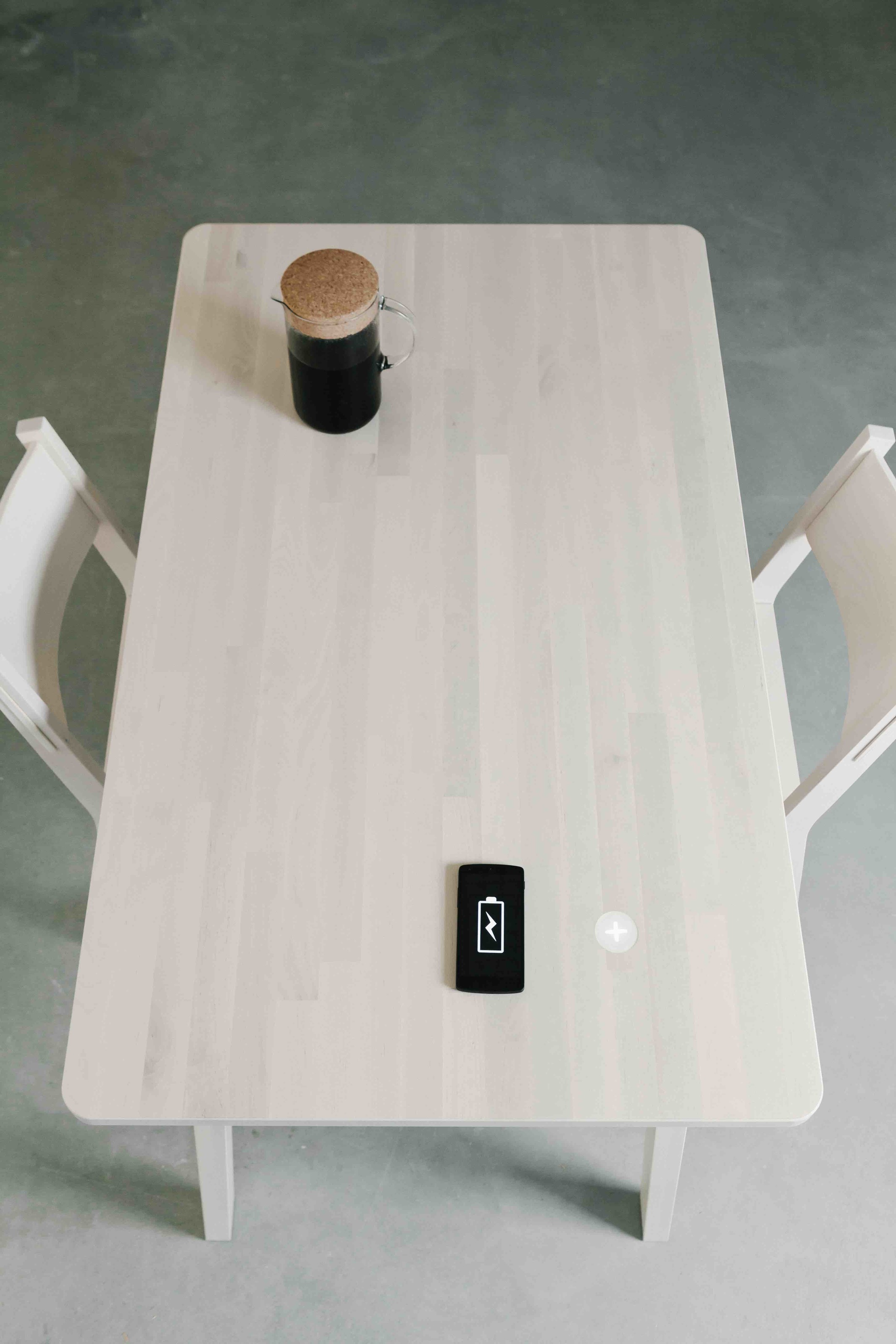Students design kitchen table that can charge your electronics
With wireless charging technology on the rise, it’s possible that your kitchen table may act as your next cellphone charger.
Sergey Komadenkov and Vihanga Gore, students from the Copenhagen Institute of Interaction, have been working in Space10, an innovation hub supported by IKEA, to develop a kind of wireless charging that uses excess heat from your home to power your devices.
The Heat Harvst concept was developed during a two-week workshop, where the duo came up with a device that could either stand alone or be integrated into household items — like kitchen tables — to capture excess heat from everyday objects and transform it into free electricity that can be reused.

The pair leveraged recent advances in the nanotechnology field in order for Heat Harvest to capture wasted heat and convert it into electricity. The idea behind the technology is that temperature differences between two surfaces can generate electricity.
According to the team, an ordinary laptop computer, used in moderation, consumes about 40 Watts of electricity and produces just as much heat.
“We imagine two possible products that use the technology,” said Vihanga Gore on the Heat Harvest project page. “The first is table tops that extract heat from hot objects that are placed on top of them. These could be anything from a pot of soup to a frying pan straight from the kitchen stove. The second product is heat harvesting pads that you could place beneath TV set top boxes or heat-emitting power adapters anywhere in the home.”
“Of course we should also try and make smarter home appliances that use less energy when we are not using them, but they would still generate heat that we can turn into electricity and reuse,” said Sergey Komardenkov.
Komadenkov and Gore consider their potential charging method an efficient and sustainable solution to a “wasteful modern society.”
Learn more at Space10.


Comments are closed, but trackbacks and pingbacks are open.